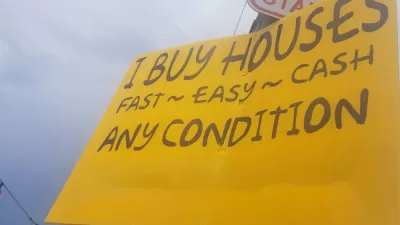The Port of Greater Cincinnati Development Authority is making sure that large, institutional investors won't continue to corner the rental housing market in Hamilton County.

"The Port of Greater Cincinnati Development Authority agreed last month to pay $14.5 million for 195 houses throughout Cincinnati and surrounding Hamilton County," according to an article published by The Real Deal, based on original reporting by Konrad Putzier and Will Parker behind the paywall at the Wall Street Journal.
According to both articles, the authority beat out a long list of investors to buy the properties—a deliberate move "to keep tenants in their homes and private investors out of their neighborhoods," in the words of the Wall Street Journal article.
"Cincinnati, because of its lower home prices compared to many cities, was prone to a stampede by investors. The rush began after the 2008 financial crisis, when many residents lost their homes to foreclosure and prices plunged," according to the Real Deal.
The port says they will initially operate the properties and rentals, but will eventually upgrade and sell the properties to low- and middle-income buyers.
The issue of large institutional investors buying up rental housing market is gaining more and more media attention. While some attempts have been made to legislate a response to the trend, few examples of government agencies acting proactively to out-bid institutional investors, like the Port of Greater Cincinnati Development Authority has done, exist (to our knowledge). One community in Los Angeles, has taken these matters into their own hands.
FULL STORY: Cincinnati agency buys 200 rental homes, elbowing out investors

Study: Maui’s Plan to Convert Vacation Rentals to Long-Term Housing Could Cause Nearly $1 Billion Economic Loss
The plan would reduce visitor accommodation by 25,% resulting in 1,900 jobs lost.

Alabama: Trump Terminates Settlements for Black Communities Harmed By Raw Sewage
Trump deemed the landmark civil rights agreement “illegal DEI and environmental justice policy.”

Why Should We Subsidize Public Transportation?
Many public transit agencies face financial stress due to rising costs, declining fare revenue, and declining subsidies. Transit advocates must provide a strong business case for increasing public transit funding.

Paris Bike Boom Leads to Steep Drop in Air Pollution
The French city’s air quality has improved dramatically in the past 20 years, coinciding with a growth in cycling.

Why Housing Costs More to Build in California Than in Texas
Hard costs like labor and materials combined with ‘soft’ costs such as permitting make building in the San Francisco Bay Area almost three times as costly as in Texas cities.

San Diego County Sees a Rise in Urban Coyotes
San Diego County experiences a rise in urban coyotes, as sightings become prevalent throughout its urban neighbourhoods and surrounding areas.
Urban Design for Planners 1: Software Tools
This six-course series explores essential urban design concepts using open source software and equips planners with the tools they need to participate fully in the urban design process.
Planning for Universal Design
Learn the tools for implementing Universal Design in planning regulations.
Smith Gee Studio
Alamo Area Metropolitan Planning Organization
City of Santa Clarita
Institute for Housing and Urban Development Studies (IHS)
City of Grandview
Harvard GSD Executive Education
Toledo-Lucas County Plan Commissions
Salt Lake City
NYU Wagner Graduate School of Public Service





























